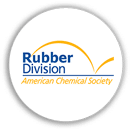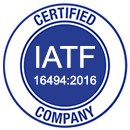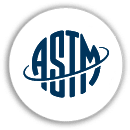Applications and Capabilities for Rubber to Metal Bonding
Many parts and components used in modern equipment and other applications require a process which can bond rubber to metal and other material. Our team can bond rubber components to steel, brass aluminum and even plastic. If you have a special application or need assistance with a product design contact us today and we can help. We have the experience and equipment to produce high quantities of rubber bonded parts with accurate tolerances quickly and efficiently. Feel free to browse through our site and let us know your specific project needs. These quality bonded rubber products are used throughout many industries including mining, bottling / glass products, and anywhere a component needs to have rubber securely bonded to a different type of material.
NVH – Noise, Vibration and Harshness
NVH performance depends on the characteristics of rubber bushes and mounts. Ride and handling depends on suspension bushes as well as springs and dampers. Coi Rubber provides materials development and evaluation testing, component testing and design analysis for these critical components.
Materials development
Development of rubber compounds with e.g. improved ageing resistance, higher temperature performance, etc.
Materials evaluation
Elastic, visco-elastic, crack growth (fatigue) behaviour
Ageing and chemical resistance
High/low temperature limits
Component testing
Static and dynamic characterisation of vibration control components, e.g. engine mounts, rubber bushes
Fatigue testing of vibration control components in single or multi-axis
Ageing and chemical resistance of vibration control components
Design analysis + FEA
Design of vibration control components
Behaviour prediction of vibration control components
Prediction of dynamic stiffness and damping
Prediction of durability/fatigue life
Long term service assessment
Process
Rubber to metal bonding is a means by which rubber is mechanically bonded to a metal insert during the molding process. To begin the bonding process, the inserts are first prepped for production using a degreasing system to rid the parts of any contaminants before the adhesive is applied. Next, the heat activated adhesive is applied to the inserts using a technique similar to spray painting. Once the metals are prepared, they are ready for production.
Production
The inserts are then physically placed, one at a time, into each cavity of the mold. For inserts on the top of a part, special magnets are incorporated into the mold to hold them in place while the mold is being loaded. Also, for inserts being encapsulated into the rubber, special chaplet pins are incorporated into the mold to suspend the insert in the mold & allow the rubber to flow around the metal.
Once the inserts are in place, the normal rubber molding process commences. After the mold is closed, and the molding begins, the adhesive on the metals is activated, allowing the inserts to bond to the rubber.
Typical applications for rubber to metal bonding include, any part requiring the combination of the flexibility of rubber and the stability of a metal. Components ranging in size from small mounts for motors to large locomotive suspension parts are just a sampling of parts produced using this process.
Rubber to Metal Bonding
- Automated metal preparation coupled with innovative molding processes allow us to produce superior rubber-to-metal bonds
- Bushings
- Isolators
- Mounts
- Noise Vibration Harness (NVH) products
- Dampeners etc








